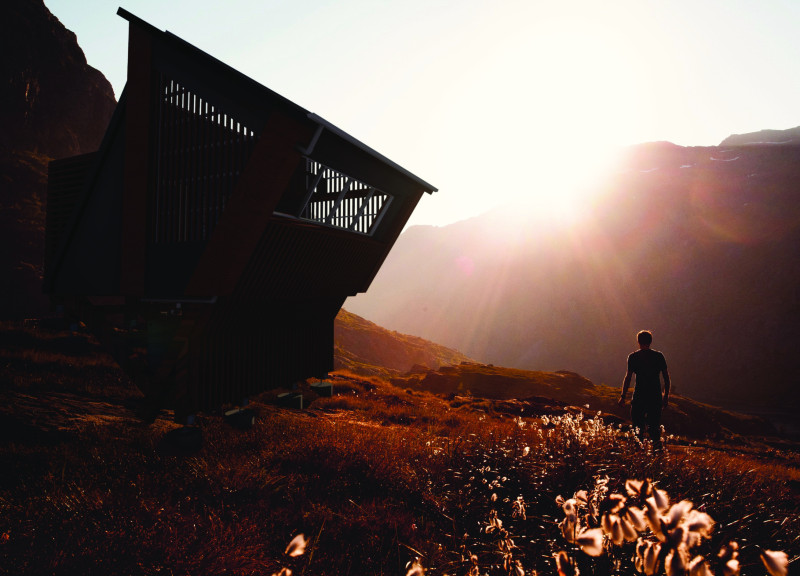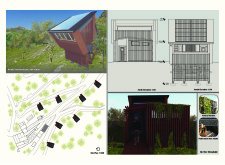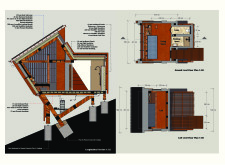5 key facts about this project
At its core, the design represents a commitment to sustainability and minimalism. The sleeping pods serve as versatile living spaces that accommodate various activities ranging from rest to contemplation and creative work. The layout of each pod is carefully planned to ensure efficient use of space, allowing for a comprehensive experience that harmonizes with the natural environment. The integration of communal areas encourages social interaction, further enriching the experience of those who visit.
A notable feature of the architectural design is its emphasis on transparency and light. The large windows that frame each pod create an immersive experience, drawing in natural light and offering uninterrupted views of the landscape. This connection is further enhanced by the use of organic materials that evoke a sense of warmth and comfort. The choice of materials, including timber, mosaic wall tiles, and sustainable roofing systems, underscores a design philosophy that prioritizes ecological responsibility while maintaining an inviting atmosphere.
The architecture also incorporates innovative design approaches that set it apart from conventional structures. The use of vertical gardens is particularly impactful, as it enhances biodiversity while contributing to a visual connection with the surrounding flora. These gardens not only serve aesthetic functions but also play a role in practical sustainability by facilitating water reuse for irrigation. Moreover, the open layout of the pods encourages airflow, thus reducing energy consumption and reliance on mechanical ventilation.
The two-story structure of the sleeping pods is another project highlight, cleverly designed to provide panoramic views of the valley. The loft space enhances the functionality of each pod, transforming what could be a simple sleeping area into a versatile environment suitable for various activities. The architectural decisions made throughout the project reflect a masterful understanding of human needs in relation to the environment, creating spaces that encourage mindfulness and well-being.
In addition to its visual appeal and functional layout, Zenith Emergence embodies a deeper narrative about the essential connection between architecture and nature. Each decision made in the design process reflects a dedication to fostering an experience that helps visitors reconnect with their surroundings and themselves. It is a space that encourages individuals to pause, reflect, and fully engage with the natural world around them.
As individuals seek more profound connections with both their environment and their inner selves, projects like Zenith Emergence serve as compelling examples of how architecture can facilitate this journey. For anyone intrigued by thoughtful architectural designs and innovative planning strategies, a closer examination of this project—including detailed architectural plans, sections, and design ideas—will reveal valuable insights into modern design practices that prioritize ecological harmony and human experience. Exploring the project further can provide a deeper understanding of its unique approach to architecture and its impact on personal well-being amidst nature.


























